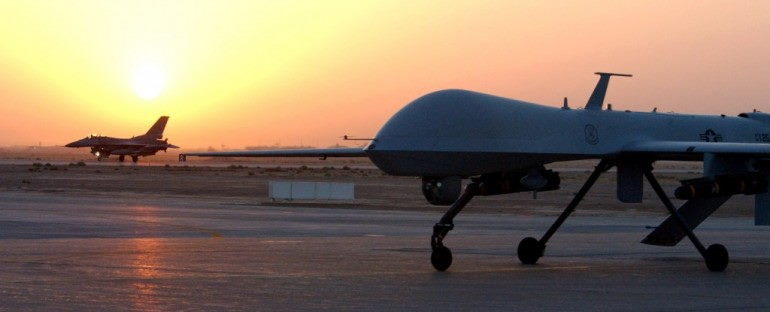Similar to technologies that initially started at a military base, unmanned aerial vehicles (UAVs) will soon be affecting civilian life. To date, several industries have built and commercially supplies low-end UAVs technologies for various non-military purposes. However, most of these UAVs are recreational and remote-controlled toys that only fly in secluded areas with minimum impact on the airspace. However, the rate at which technology is advancing, civilian UAVs are no longer restricted to creational use.
Despite advancements, the existing collision avoidance systems that are currently regulated within the civilian airspace were unable to integrate both manned and unmanned aircraft. The research discussed in this post therefore presents the design, implementation, and verification of two types of cooperative collision avoidance algorithms for UAVs in multi-aircraft conflict scenarios.
- What are unmanned aerial vehicles
UAVs are aircraft and rotorcraft without pilots or passengers that are operated remotely and have a high degree of autonomy. UAVs are used in numerous applications such as aerial photography, product delivery, search and rescue, wildlife surveys, weather monitoring, agriculture and aerial crop surveys, construction, journalism, law enforcement, military reconnaissance, and visual inspection of infrastructures like bridges, roads, and power lines. These vehicles can range in size from the size of an insect to a heavy-lift drone that can carry hundreds of pounds.
- Types of collision avoidance algorithms
To approach the research, two types of collision avoidance algorithms were developed and verified in simulation: a rules-based algorithm and a cooperative path planning-based algorithm. The rules-based collision avoidance algorithm mimics the tactical Traffic Collision Avoidance System (TCAS) that is used on commercial passenger airliners. To enable multi-aircraft collision avoidance, two methods for combining the pairwise rules-based collision avoidance actions were proposed, namely Resolution Action Superposition (RAS) and pairwise Closest-Intruder-First (CIF).
A simulation environment was created to test both the rules-based and path planning based collision avoidance algorithms. In this regard, set-piece conflict avoidance scenarios were performed to produce illustrative results. The simulations illustrated that both rules-based and path planning based collision avoidance can resolve both pairwise and multi-aircraft conflicts. Furthermore, Monte Carlo simulations were performed to produce statistical results and evaluate the performance of both algorithms in random conflict scenarios. The Monte Carlo simulation is a computerised mathematical technique that allows people to account for risk in quantitative analysis and decision making.
- Results
The simulation results show that both the rules-based and path planning based solutions can successfully resolve collision scenarios involving multiple unmanned aerial vehicles. The rules-bases solution requires less computational effort but does not optimise the collision avoidance plans. The path planning based solution requires much more computational effort but provides optimal solutions that minimise the deviation from the original flights and the control effort of the avoidance actions.
- Recommendations and future work
The following recommendation and future work references were made on the cooperative path planning for multiple UAVs over a wireless reliable communication network.
- Extending the two-dimensional collision prediction and avoidance to three dimensions.
- Horizontal actions, such as heading changes and speed adjustments, should be investigated as possible alternative collision avoidance actions.
- Other token allocation strategies should be investigated.
- Sampling-based path planning techniques, which use random state or input sampling, should be investigated as an alternative to the deterministic actions sampling that was employed in this research.
Based on the following research dissertation: https://scholar.sun.ac.za/handle/10019.1/108293




